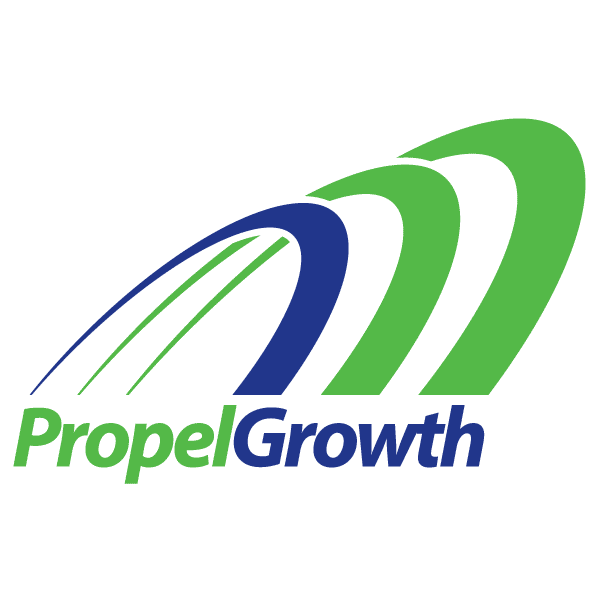![]()
One of our most popular blog posts last year discussed the difference between content marketing and thought leadership. As I work with clients to plan their content strategy, this continues to be an important issue.
Explaining the Value of Financial Technology is Hard
We work with quite a few fin-tech vendors who sell infrastructure and other technology to support electronic trading and risk management. In most cases, explaining the value proposition of this technology is challenging. Just telling someone what it does often requires a white board.
So content marketing is critically important for these vendors. They have to publish a great deal of content to help buyers understand the value proposition and capabilities of sophisticated and often esoteric technology. Content including papers, articles, videos, webinars and blogs help buyers gradually understand their business needs from a new frame of reference that creates demand for new and innovative fin-tech solutions.
Explaining what “it is” to a target market with a limited attention span takes time, focus, and lots and lots of repetition.
Getting Bored with the Messaging
But often, we find that our clients get bored with their messaging before they manage to get it drilled into the consciousness of their target market. They’re meeting with clients who are asking for new functionality. They’re working on new development roadmaps that improve the solution’s value to clients or extend their market opportunity. They’re keeping an eye on competition and trying to keep their messaging one step ahead. And their tendency is to want to start writing about where they’re going instead of where they are today.
I can understand that. You’re excited about where you’re going, because you know it will be better than where you are today. But the problem is that your content sets customer expectations for what they can buy and implement TODAY.
Don’t Drive Past Your Headlights
When driving in the dark, it’s important to keep your speed low enough so you can stop or swerve within the distance illuminated by your headlights. This is a good analogy for marketing and selling technology – don’t sell past your headlights.
Here’s what I mean:
Most complex fin-tech sales processes take about 6-18 months to close. So you can expect new clients to be implementing what you will have ready in 6 months. When you’re developing your marketing strategy and content plans, make sure that the functionality and capabilities you’re marketing will be readily available by that time. Otherwise, you’ll create demand for functionality that isn’t ready yet. This will have the negative impact of delaying deals and making it more difficult for your sales team to meet their quarterly and annual revenue goals.
So in other words, your core content marketing strategy should focus on helping people understand how they can benefit from using your core products AS THEY EXIST TODAY or at the point when they would sign a contract. This content is critical to driving demand for the next 12 months.
Thought Leadership is About Driving Change
While you’re creating demand for what you have available today, you also need to establish certain people in your company as thought leaders and visionaries. Thought leadership should have two goals:
- Building trust in your company’s ability to meet future needs
- Being an industry change agent
Building Trust for the Future
As prospects consider your company as a partner, they need to feel confident not only in the product’s functionality today, but also in your company’s ability to support their needs into the future. So sharing some ideas about where you want to go in the future will help them build confidence that you’re a good long-term partner. Establish some of your key people as visionaries and let them share high level views of where they’re going and why. But be careful. Don’t set expectations that you can’t meet.
Being a Change Agent
In my last article on the difference between thought leadership and content marketing, I talked about an example of how one company became a change agent helping to end the practice of providing “naked access” or direct market access (DMA) without risk constraints. That was a long-term campaign designed to build demand for risk-controlled DMA.
Thought leadership of this style takes time and lots of attention. It won’t have an immediate impact on pipeline, so don’t set any kind of short-term ROI expectation for this kind of program. It should take your 1-2 year product roadmap into consideration and should point out flaws and weaknesses in the current market structure or industry best practice with recommendations for how the industry should correct these flaws.
This type of thought leadership involves a multi-pronged approach where you write about the topic consistently over time in blogs and op-eds. Authoring a book can really help build credibility and attract press attention. You should weave the thought leadership strategy into your PR campaigns, reaching out to the press, seeking speaking slots at conferences, and presenting academic papers on the issue.
Just one or two thought leadership articles a year on a topic won’t accomplish significant results. The book of press clippings related to the naked access campaign was 4 inches thick, filled with articles, press releases, commentary, and announcements that built up gradually over the course of about 3 years. It started slow in 2007, and started to catch a head of steam in 2009.
Content to Drive Sales, Thought Leadership to Drive Change
So an easy way to distinguish between the two disciplines is to think of your core content marketing strategy as something that will generate leads and help close sales for today’s products based on why your customers are currently buying. Your thought leadership strategy should have a longer-term goal of helping your company be an agent for change. Both are important to your overall marketing strategy. But don’t put all your eggs in the thought leadership basket. Both are necessary.
Content marketing drives demand for today, thought leadership drives demand for the long term.
- 4 Steps to Optimize Your LinkedIn Profile for Sales Prospecting – February 12, 2021
- The Reality of Cold Calling for B2B Sales – January 11, 2021
- Can Inbound Marketing Generate Enough Leads? – January 9, 2021







